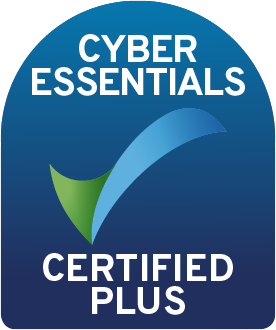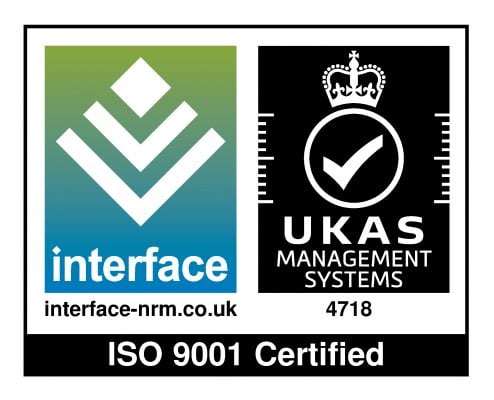HR departments continue to have to manage through challenging times. Post-pandemic, employees are facing a number of issues that are either directly or indirectly HR Directors’ and HR Manager’s priorities. Remote working, skyrocketing inflation, a tight labour market, and the Great Resignation are just some of the issues HR professionals are having to juggle.
Unfortunately, these disruptions are set to continue throughout 2023. Therefore, with unprecedented shakeups now the order of the day, human resources need to improve their understanding of how current challenges are impacting operations. They also need to work towards developing more adaptable workforce models.
This article highlights the top 5 HR challenges and what organisations can do to stay ahead of the curve. One way to accomplish this is through the use of centralised L&D platforms, such as Totara’s Learn, Engage and Perform to allow employees to collaborate, communicate, and stay engaged remotely.
Top 5 HR Challenges
1. Creating a Healthy Work Environment
Forming a healthy work environment remotely is one of the most important challenges for HR professionals to conquer. This sudden shift to remote working has left many organisations struggling to manage and engage with their employees. Even when adapting to a hybrid working environment, it can be difficult to motivate teams, achieve business goals and build genuine connections among different departments.
But how can you create a healthy remote work environment? Your organisation should strive to dedicate time to virtual team building, host face-to-face events for teams to meet, and encourage online participation. Learning management systems can significantly enhance your workplace environment in a number of ways, including:
- Provide an online community for shared learning in the workplace
- A quick and efficient creation of discussion forums and assignments related to the real-time learning needs of your employees
- Provide a set of common courses and skills to be learned by employees and staff in multiple departments
Moreover, during the pandemic employees have had time to take a critical look at their work-life balance. Football tables, seating pods and coffee machines are no longer the ‘employee benefit’ difference makers that they once might have been. Increasingly, today’s employees are demanding an opportunity to improve their skills. And this is where a powerful LMS can be a huge benefit in helping create a healthier work environment.
When employees are given an opportunity to learn in a way that accommodates them and their specific needs, they will feel valued. E-Learning can help organisations to empower employees to take charge of their development trajectory, driving the cultivation of a positive learning mindset.
2. Training and Development of Talent
The skills gap is real, and it’s bad. A Korn Ferry report describes a “looming and unexpected talent shortage across industries and continents”, predicting that by 2030, more than 85 million jobs could go unfilled due to a massive skills shortage. Staying on top of training and development with a unified HR platform that brings all your learning management processes together is imperative.
Investing in an LMS for employee training can seem like just another cost, but the return on investment can be significant. A recent study by the Association Society for Talent Development (ASTD) found that businesses utilising employee training solutions enjoyed higher profit margins (24%) and higher income per employee (218%).
Using learning management systems (LMSs) and adopting e-learning is increasingly common across many organisations these days. However, it’s also clear that many organisations have yet to fully realise the wide range of training opportunities that a powerful LMS can offer. Some of the most common areas in which to deploy an e-learning solution are:
- Onboarding of new employees
- Compliance and certifications
- Upskilling employees
- Specific product training
- Managing partners and customers
With digitisation taking an ever more permanent foothold it’s expected that 50% of employees will need to be reskilled by 2025. Ensuring that you have the e-learning technology to offer the necessary training will go a long way of demonstrating to your employees that they don’t need to look for a new job in order to advance their career or change their career path.
3. Staff retention
One of the biggest challenges for any organisation is keeping their employees actively engaged and satisfied. According to the Gallup Workplace, only 36% of employees are highly engaged at work, which leads to high levels of voluntary turnover. This is very costly – for example, the cost of replacing an employee can be twice their salary and a high employee turnover rate severely impacts the performance of any business. Unfortunately, employee turnover has risen dramatically over the last 2 years, primarily driven by:
- Pandemic-fuelled changes in workplace expectations
- Increasing remote work opportunities
- New generational mindsets
- A competitive job market
- A struggling global economy
It is safe to assume that this trend will not slow down in 2023. Therefore, HR departments will need to get more innovative to retain their best talent. Some practical approaches include:
- Investing in employee development as they are less inclined toward leaving when they know their employer is investing in helping them grow professionally within the organisation.
- Prioritising flexibility and work-life balance - organisations that offer more flexible work arrangements have a better chance of attracting and retaining top talent.
Staff retention must be a priority for every HR department. Employee retention does not have to be a daunting task. By employing a powerful LMS with its many features to upskill, reskill, and engage learners will go a long way to significantly improving staff retention rates.
4. Employee engagement and productivity issues
Employee engagement levels have taken a downward turn in recent years, dropping from 36% in 2020 to 34% in 2021 and 32% in early 2022. The recent Gallup survey from 2022 mentioned above survey further reveals that 17% of employees are actively disengaged, up from 16% last year.

Engaged employees are critical to an organisation’s success as they tend to be more productive, have better attendance, and are less likely to leave their jobs. Several factors contribute to these low engagement rates, including some areas that have been talked about in the previous points of this post. These include a lack of development opportunities, a poor work-life balance, and a lack of trust in leadership. As the workforce evolves, HR professionals must find new ways to engage and motivate employees.
Some strategies that can help increase employee engagement include:
- Improve communication - employees that understand the organisation’s goals and how their role contributes to meeting these tend to be much more engaged. HR teams can enhance communication by implementing regular check-ins, regularly taking the pulse of the organisation by conducting periodic surveys, and by holding ‘town hall’ meetings.
- Continue to offer development opportunities – as highlighted above, employees want growth opportunities within their organisation. HR departments should develop impactful training and e-learning programmes to meet this demand.
- Encourage a healthy work-life balance – HR has a key role here in developing appropriate policies, such as offering flexible working arrangements.
The creative use of LMS technology along with careful course design can go a long way toward fostering a social, collaborative employee experience. A flexible LMS like Moodle or Totara Learn has many features that help promote employee engagement.
5. Compliance challenges
Compliance management for organisations is non-negotiable. Your organisation risks paying significant fines and suffering a bad reputation due to poor compliance management. This makes it a critical area for HR teams to manage.
Organisations operate in an environment of frequently updated regulations and new challenges – which means that areas surrounding compliance are also moving quickly. Organisations need to be able to keep up and adapt to this ever-changing landscape.
Implementing compliance training at the heart of your learning management system is an ideal way to create a streamlined process and keep everything in one place. This will ensure that you are in a position to protect your organisation, employees, and customers, whilst abiding by the ever-changing regulations.

Using your LMS for the management of compliance training can dramatically streamline what is often a hugely manual process. An LMS gives you the ability to:
- Provide a centralised and trackable system for your e-learning content
- Automate system reports on compliance
- Have a clear and effective audit trail
- Automate reminders and refresher training programmes
- Issue certificates
Compliance will only be a struggle for your team if you don’t have the right tools.
Adopting a powerful LMS to make challenges easier to deal with
Following the global pandemic, HR teams continue to have to manage many challenges - the switch to remote work, employee retention and engagement, and staying compliant. And for HR leaders, this might just be all in a day’s work, but having the right tools at their disposal can make many of these challenges much easier to deal with. Adopting a market leading LMS can make many of these challenges easier to deal with.
Our e-learning solutions have the full range of functionality to help HR teams tackle many challenges, find out more by getting in touch with one of our e-learning experts today.

Book a free LMS demo
Book a demo with one of our e-learning experts and learn first-hand how our e-learning solutions can help your HR teams tackle a number of challenges in 2023 and beyond.
.png?width=900&height=125&name=Slim%20blog%20CTAs%20(20).png)




